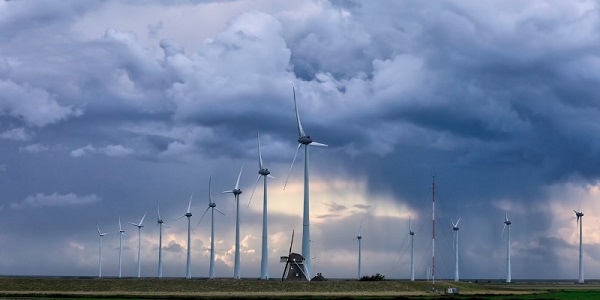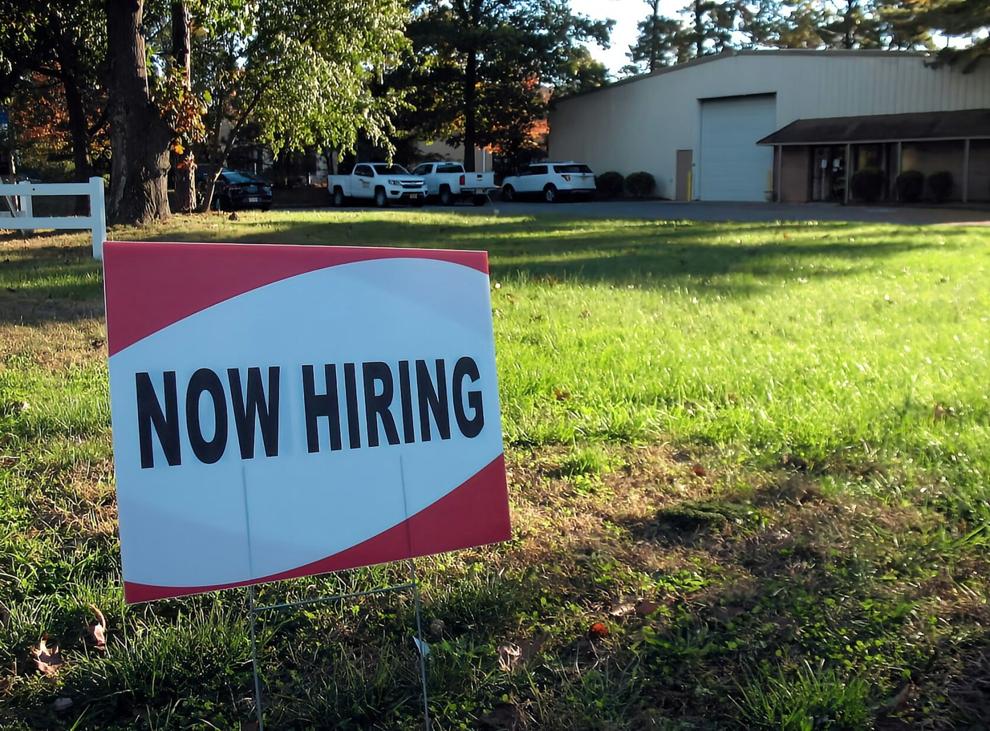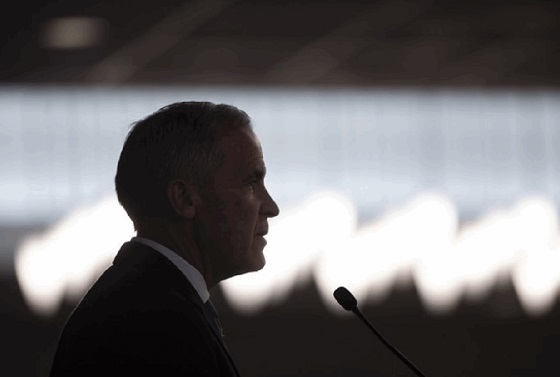Economy
Canada should not want to lead the world on climate change policy

From the Fraser Institute
Some commentators in the media want the the federal Conservatives to take a leadership position on climate, and by extension make Canada a world leader on the journey to the low-carbon uplands of the future. This would be a mistake for three reasons.
First, unlike other areas such as trade, defence or central banking, where diplomats aim for realistic solutions to identifiable problems, in the global climate policy world one’s bona fides are not established by actions but by willingness to recite the words of an increasingly absurd creed. Take, for example, United Nations Secretary General António Guterres’ fanatical rhetoric about the “global boiling crisis” and his call for a “death knell” for fossil fuels “before they destroy our planet.” In that world no credit is given for actually reducing emissions unless you first declare that climate change is an existential crisis, that we are (again, to quote Guterres) at the “tip of a tipping point” of “climate breakdown” and that “humanity has become a weapon of mass extinction.” Any attempt to speak sensibly on the issue is condemned as denialism, whereas any amount of hypocrisy from jet-setting politicians, global bureaucrats and celebrities is readily forgiven as long as they parrot the deranged climate crisis lingo.
The opposite is also true. Unwillingness to state absurdities means actual accomplishments count for nothing. Compare President Donald Trump, who pulled out of the Paris treaty and disparaged climate change as unimportant, to Prime Minister Justin Trudeau who embraced climate emergency rhetoric and dispatched ever-larger Canadian delegations to the annual greenhouse gabfests. In the climate policy world, that made Canada a hero and the United States a villain. Meanwhile, thanks in part to expansion of natural gas supplies under the Trump administration, from 2015 to 2019 U.S. energy-based CO2 emissions fell by 3 per cent even as primary energy consumption grew by 3 per cent. In Canada over the same period, CO2 emissions fell only 1 per cent despite energy consumption not increasing at all. But for the purpose of naming heroes and villains, no one cared about the outcome, only the verbiage. Likewise, climate zealots will not credit Conservatives for anything they achieve on the climate file unless they are first willing to repeat untrue alarmist nonsense, and probably not even then.
On climate change, Conservatives should resolve to speak sensibly and use mainstream science and economic analysis, but that means rejecting climate crisis rhetoric and costly “net zero” aspirations. Which leads to the second problem—climate advocates love to talk about “solutions” but their track record is 40 years of costly failure and massive waste. Here again leadership status is tied to one’s willingness to dump ever-larger amounts of taxpayer money into impractical schemes loaded with all the fashionable buzzwords. The story is always the same. We need to hurry and embrace this exciting economic opportunity, which for some reason the private sector won’t touch.
There are genuine benefits to pursuing practical sensible improvements in the way we make and use fossil fuels. But the current and foreseeable state of energy technology means CO2 mitigation steps will be smaller and much slower than was the case for other energy side-effects such as acid rain and particulates. It has nothing to do with lack of “political will;” it’s an unavoidable consequence of the underlying science, engineering and economics. In this context, leadership means being willing sometimes to do nothing when all the available options yield negative net benefits.
That leads to the third problem—opportunity cost. Aspiring to “climate leadership” means not fixing any of the pressing economic problems we currently face. Climate policy over the past four decades has proven to be very expensive, economically damaging and environmentally futile. The migration of energy-intensive industry to China and India is a very real phenomenon and more than offsets the tiny emission-reduction measures Canada and other western countries pursued under the Kyoto Protocol.
The next government should start by creating a new super-ministry of Energy, Resources and Climate where long-term thinking and planning can occur in a collaborative setting, not the current one where climate policy is positioned at odds with—and antagonistic towards—everything else. The environment ministry can then return its focus to air and water pollution management, species and habitat conservation, meteorological services and other traditional environmental functions. The climate team should prepare another national assessment but this time provide much more historical data to help Canadians understand long-term observed patterns of temperature and precipitation rather than focusing so much on model simulations of the distant future under implausible emission scenarios.
The government should also move to extinguish “climate liability,” a legal hook on which dozens of costly nuisance lawsuits are proliferating here and elsewhere. Canada should also use its influence in the UN Intergovernmental Panel on Climate Change to reverse the mission creep, clean out the policy advocacy crowd and get the focus back on core scientific assessments. And we should lead a push to move the annual “COPs”—Conferences of the Parties to the Rio treaty—to an online format, an initiative that would ground enough jumbo jets each year to delay the melting of the ice caps at least a century.
Finally, the new Ministry of Energy, Resources and Climate should work with the provinces to find one region or municipality willing to be a demonstration project on the feasibility of relying only on renewables for electricity. We keep hearing from enthusiasts that wind and solar are the cheapest and best options, while critics point to their intermittency and hidden costs. Surely there must be one town in Canada where the councillors, fresh from declaring a climate crisis and buying electric buses, would welcome the chance to, as it were, show leadership. We could fit them out with all the windmills and solar panels they want, then disconnect them from the grid and see how it goes. And if upon further reflection no one is willing to try it, that would also be useful information.
In the meantime, the federal Conservatives should aim merely to do some sensible things that yield tangible improvements on greenhouse gas emissions without wrecking the economy. Maybe one day that will be seen as real leadership.
Author:
Business
Socialism vs. Capitalism

People criticize capitalism. A recent Axios-Generation poll says, “College students prefer socialism to capitalism.”
Why?
Because they believe absurd myths. Like the claim that the Soviet Union “wasn’t real socialism.”
Socialism guru Noam Chomsky tells students that. He says the Soviet Union “was about as remote from socialism as you could imagine.”
Give me a break.
The Soviets made private business illegal.
If that’s not socialism, I’m not sure what is.
“Socialism means abolishing private property and … replacing it with some form of collective ownership,” explains economist Ben Powell. “The Soviet Union had an abundance of that.”
Socialism always fails. Look at Venezuela, the richest country in Latin America about 40 years ago. Now people there face food shortages, poverty, misery and election outcomes the regime ignores.
But Al Jazeera claims Venezuela’s failure has “little to do with socialism, and a lot to do with poor governance … economic policies have failed to adjust to reality.”
“That’s the nature of socialism!” exclaims Powell. “Economic policies fail to adjust to reality. Economic reality evolves every day. Millions of decentralized entrepreneurs and consumers make fine tuning adjustments.”
Political leaders can’t keep up with that.
Still, pundits and politicians tell people, socialism does work — in Scandinavia.
“Mad Money’s Jim Cramer calls Norway “as socialist as they come!”
This too is nonsense.
“Sweden isn’t socialist,” says Powell. “Volvo is a private company. Restaurants, hotels, they’re privately owned.”
Norway, Denmark and Sweden are all free market economies.
Denmark’s former prime minister was so annoyed with economically ignorant Americans like Bernie Sanders calling Scandanavia “socialist,” he came to America to tell Harvard students that his country “is far from a socialist planned economy. Denmark is a market economy.”
Powell says young people “hear the preaching of socialism, about equality, but they don’t look on what it actually delivers: poverty, starvation, early death.”
For thousands of years, the world had almost no wealth creation. Then, some countries tried capitalism. That changed everything.
“In the last 20 years, we’ve seen more humans escape extreme poverty than any other time in human history, and that’s because of markets,” says Powell.
Capitalism makes poor people richer.
Former Rep. Jamaal Bowman (D-N.Y.) calls capitalism “slavery by another name.”
Rep. Alexandria Ocasio-Cortez (D-N.Y.) claims, “No one ever makes a billion dollars. You take a billion dollars.”
That’s another myth.
People think there’s a fixed amount of money. So when someone gets rich, others lose.
But it’s not true. In a free market, the only way entrepreneurs can get rich is by creating new wealth.
Yes, Steve Jobs pocketed billions, but by creating Apple, he gave the rest of us even more. He invented technology that makes all of us better off.
“I hope that we get 100 new super billionaires,” says economist Dan Mitchell, “because that means 100 new people figured out ways to make the rest of our lives better off.”
Former Labor Secretary Robert Reich advocates the opposite: “Let’s abolish billionaires,” he says.
He misses the most important fact about capitalism: it’s voluntary.
“I’m not giving Jeff Bezos any money unless he’s selling me something that I value more than that money,” says Mitchell.
It’s why under capitalism, the poor and middle class get richer, too.
“The economic pie grows,” says Mitchell. “We are much richer than our grandparents.”
When the media say the “middle class is in decline,” they’re technically right, but they don’t understand why it’s shrinking.
“It’s shrinking because more and more people are moving into upper income quintiles,” says Mitchell. “The rich get richer in a capitalist society. But guess what? The rest of us get richer as well.”
I cover more myths about socialism and capitalism in my new video.
Business
Residents in economically free states reap the rewards

From the Fraser Institute
A report published by the Fraser Institute reaffirms just how much more economically free some states are compared with others. These are places where citizens are allowed to make more of their economic choices. Their taxes are lighter, and their regulatory burdens are easier. The benefits for workers, consumers and businesses have been clear for a long time.
There’s another group of states to watch: “movers” that have become much freer in recent decades. These are states that may not be the freest, but they have been cutting taxes and red tape enough to make a big difference.
How do they fare?
I recently explored this question using 22 years of data from the same Economic Freedom of North America index. The index uses 10 variables encompassing government spending, taxation and labour regulation to assess the degree of economic freedom in each of the 50 states.
Some states, such as New Hampshire, have long topped the list. It’s been in the top five for three decades. With little room to grow, the Granite State’s level of economic freedom hasn’t budged much lately. Others, such as Alaska, have significantly improved economic freedom over the last two decades. Because it started so low, it remains relatively unfree at 43rd out of 50.
Three states—North Carolina, North Dakota and Idaho—have managed to markedly increase and rank highly on economic freedom.
In 2000, North Carolina was the 19th most economically free state in the union. Though its labour market was relatively unhindered by the state’s government, its top marginal income tax rate was America’s ninth-highest, and it spent more money than most states.
From 2013 to 2022, North Carolina reduced its top marginal income tax rate from 7.75 per cent to 4.99 per cent, reduced government employment and allowed the minimum wage to fall relative to per-capita income. By 2022, it had the second-freest labour market in the country and was ninth in overall economic freedom.
North Dakota took a similar path, reducing its 5.54 per cent top income tax rate to 2.9 per cent, scaling back government employment, and lowering its minimum wage to better reflect local incomes. It went from the 27th most economically free state in the union in 2000 to the 10th freest by 2022.
Idaho saw the most significant improvement. The Gem State has steadily improved spending, taxing and labour market freedom, allowing it to rise from the 28th most economically free state in 2000 to the eighth freest in 2022.
We can contrast these three states with a group that has achieved equal and opposite distinction: California, Delaware, New Jersey and Maryland have managed to decrease economic freedom and end up among the least free overall.
What was the result?
The economies of the three liberating states have enjoyed almost twice as much economic growth. Controlling for inflation, North Carolina, North Dakota and Idaho grew an average of 41 per cent since 2010. The four repressors grew by just 24 per cent.
Among liberators, statewide personal income grew 47 per cent from 2010 to 2022. Among repressors, it grew just 26 per cent.
In fact, when it comes to income growth per person, increases in economic freedom seem to matter even more than a state’s overall, long-term level of freedom. Meanwhile, when it comes to population growth, placing highly over longer periods of time matters more.
The liberators are not unique. There’s now a large body of international evidence documenting the freedom-prosperity connection. At the state level, high and growing levels of economic freedom go hand-in-hand with higher levels of income, entrepreneurship, in-migration and income mobility. In economically free states, incomes tend to grow faster at the top and bottom of the income ladder.
These states suffer less poverty, homelessness and food insecurity and may even have marginally happier, more philanthropic and more tolerant populations.
In short, liberation works. Repression doesn’t.
-

 Health2 days ago
Health2 days agoAll 12 Vaccinated vs. Unvaccinated Studies Found the Same Thing: Unvaccinated Children Are Far Healthier
-

 International13 hours ago
International13 hours agoOttawa is still dodging the China interference threat
-

 Business11 hours ago
Business11 hours agoThere’s No Bias at CBC News, You Say? Well, OK…
-

 Automotive10 hours ago
Automotive10 hours agoCanada’s EV gamble is starting to backfire
-

 International12 hours ago
International12 hours ago2025: The Year The Narrative Changed
-

 Opinion2 days ago
Opinion2 days agoPope Leo XIV’s Christmas night homily
-

 armed forces2 days ago
armed forces2 days agoRemembering Afghanistan and the sacrifices of our military families
-

 Fraser Institute1 day ago
Fraser Institute1 day agoCarney government sowing seeds for corruption in Ottawa








